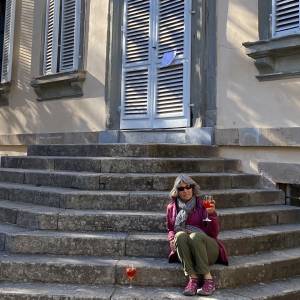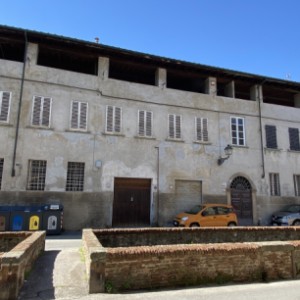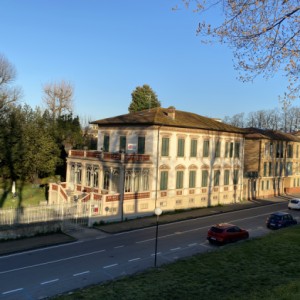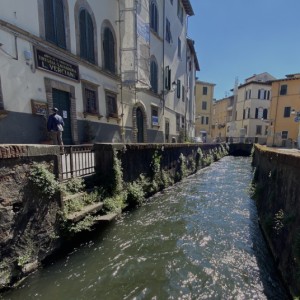Fosso e Fontana
Yesterday was our first day of three weeks of classes at Lucca Italian school— a Liberty style building as pictured during my early morning run along Le Mura (the wall; extra photo). Fosso (ditch/canal) e fontana (fountain) in main post tells a water story. In Medieval/Renaissance times, Lucca was famous for elegant silk fabric and garments. The silk was obtained from the Orient, but the fabric was woven, dyed and sewn into garments here on this street in Lucca. The fabric was washed and rinsed in the fosso and then open-air dried on the covered roof of the building. See extra photos: 1) Note the covered roof of the building with the fosso in foreground. 2) Note the steps down into the fosso, to access for washing and the sign of the building behind it is now a restaurant, but the old sign remains indicating the original use of the building: “Tintoria e Lavanderia”. The fountain in the foreground of the main post is one of many throughout the city (and most Italy). Il fiume (river) Serchio feeds the fosso, but the delicious drinking water from the fountains flows through 18th century Notolino aqueduct from mountain springs about 5 kim outside of Lucca. The fountains are THE place to fill your water bottles. The municipal tap water is treated and clean, but doesn’t taste good. So everyone goes to the free-flowing fountains to fill their water bottles or they buy bottled spring water which is quite an industry. An entire aisle or room is devoted to bottled water in the local supermarkets.




Comments
Sign in or get an account to comment.


